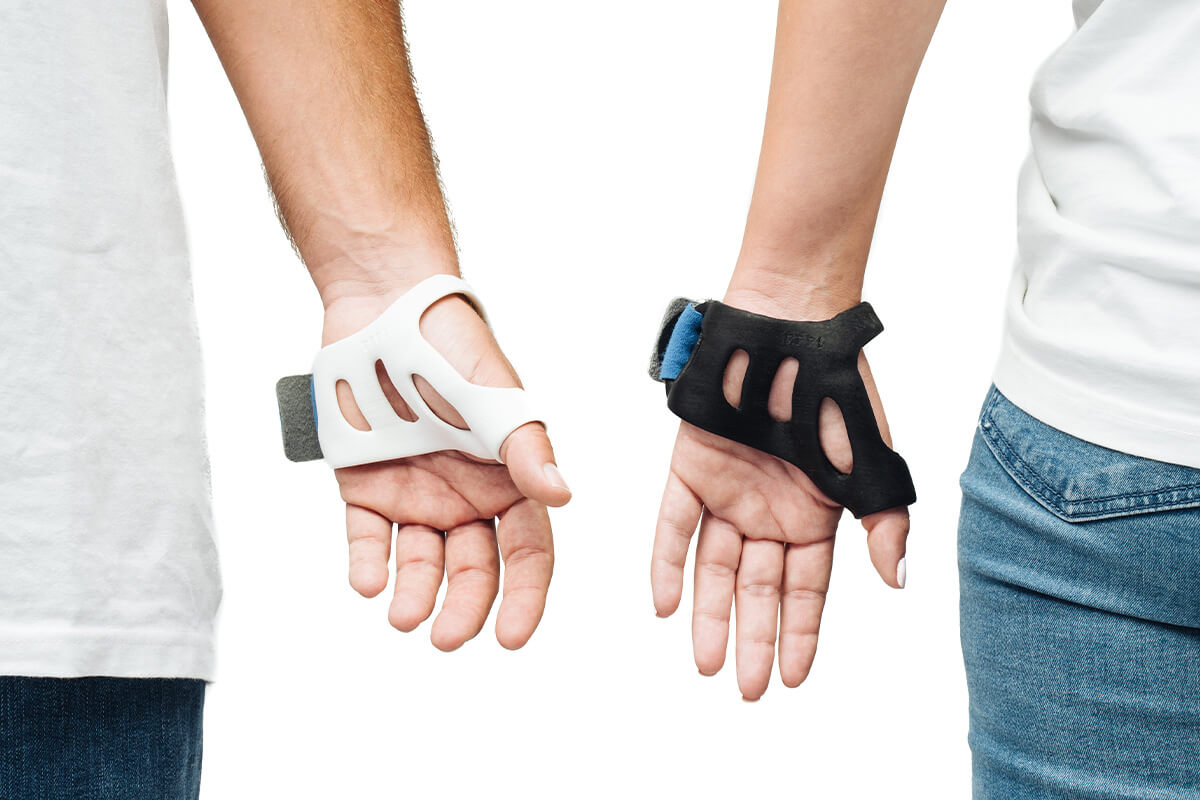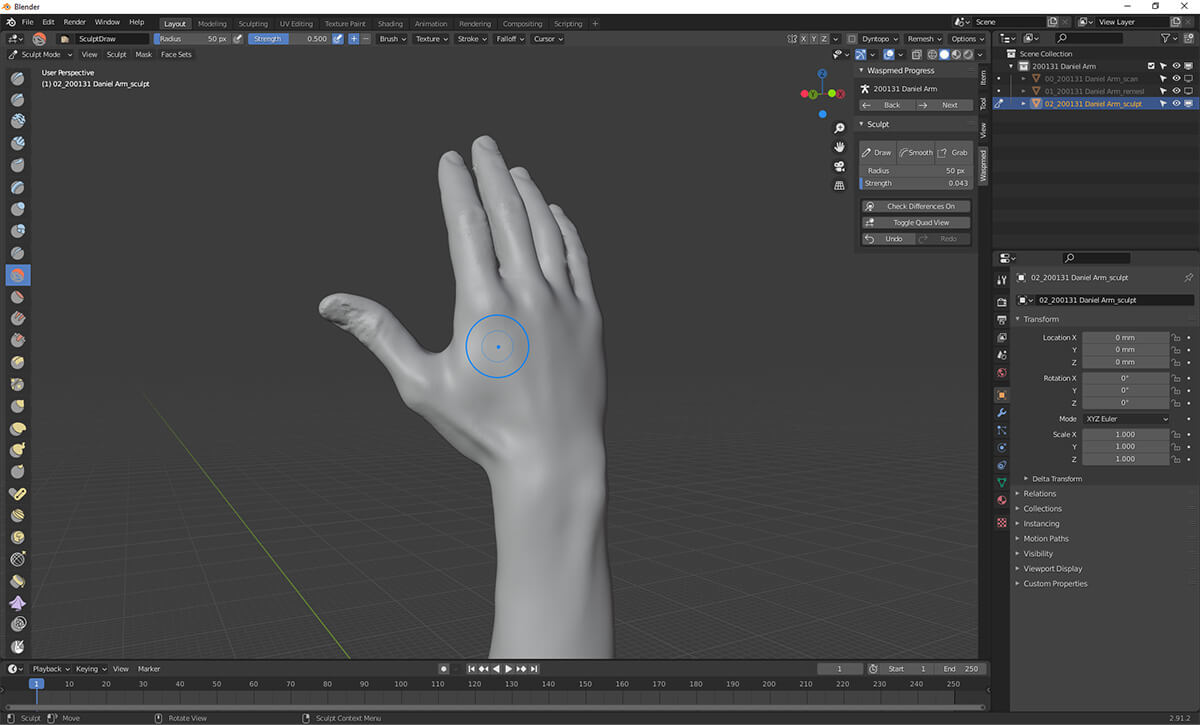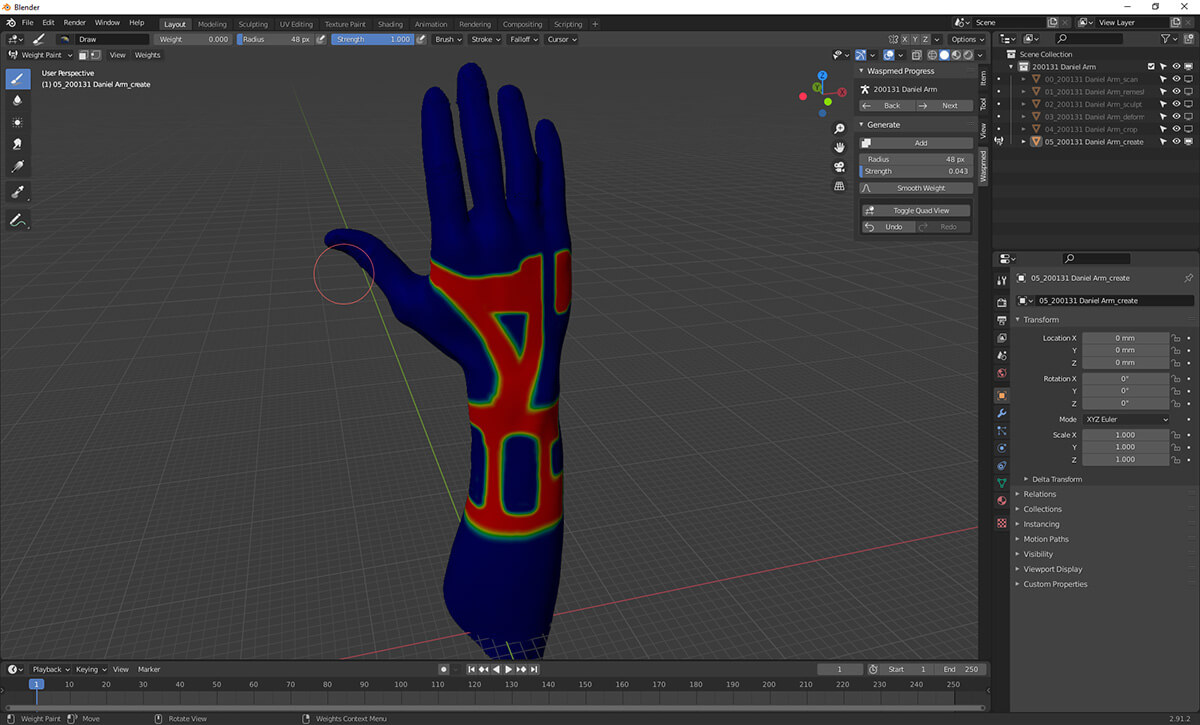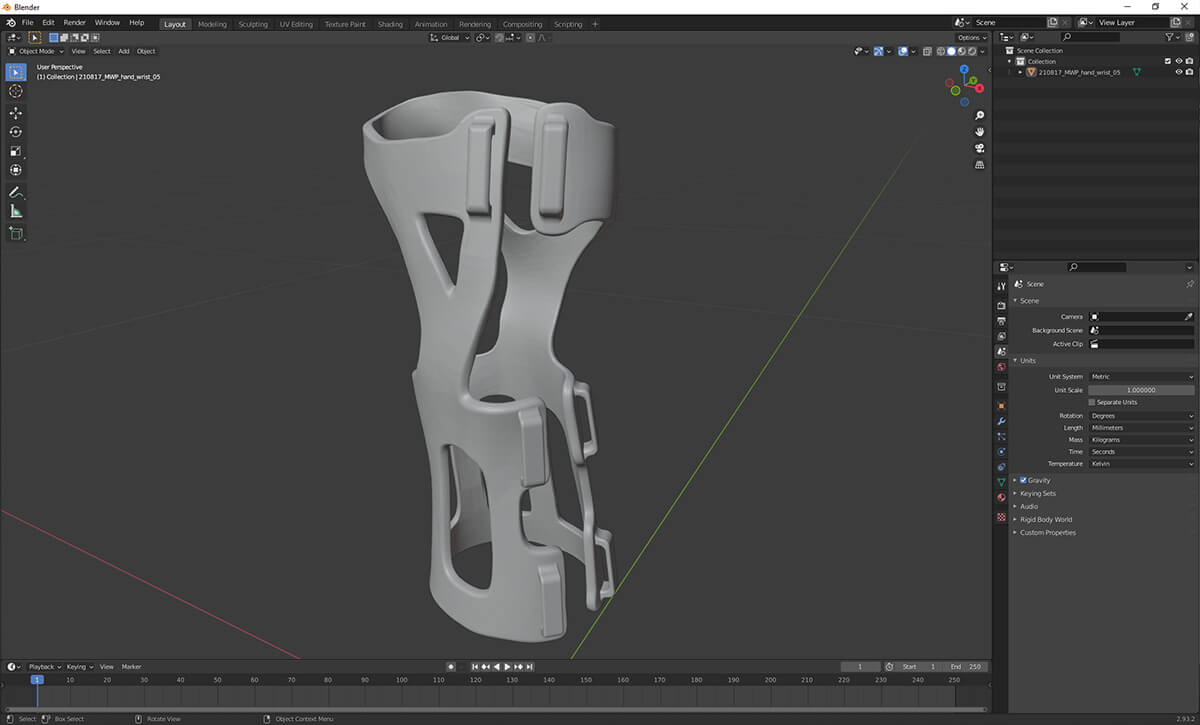
3D Printing Workflow for Orthotics and Prosthetics Professionals
Orthotics and Prosthetics professionals integrate 3D printing to their workflow more and more. They know that when it comes to orthotics and prosthetics, “off-the-shelf” products may not be a perfect fit for their patients. No two patients are the same, and for every medical situation, there are different needs and demands.
Orthopedic professionals are the experts in their field and even though many developed their skills with traditional manufacturing, 3D printing should also be in option, as it allows them to work better and with more design freedom. At this crossroads, 3D printing can play a crucial part in optimizing the workflow and the future development of this field.
3D Printing Orthotics and Prosthetics is a Real Asset
3D printing or Additive Manufacturing (AM) is a generic term for different technologies that print devices generated from a digital 3D model by adding layer by layer. Additive Manufacturing offers various materials, whether it be polymers, metals, filaments, or resin. 3D printing comes as a fabrication tool that presents the benefits of being very versatile, with the capacity of bringing simple, or advanced, designs to life.
3D printing orthotics and prosthetics becomes increasingly important as it offers a new set of tools helping professionals to create the most suitable devices making their patients’ lives easier. 3D printing provides several benefits for orthotics and prosthetics (O&P) experts:
- Shorter fitting times: The design and iteration process can be shortened, as the 3D scan can be optimized and tested digitally. The manufacturing process is much quicker, allowing more time for fittings and qualitative post-finishing.
- Design innovations: 3D printing offers freedom of design, which allows creating unique custom devices and allows the use of lighter and more breathable devices.
On the basis of a real life use case about a prosthetic socket Forward AM already showed how Additive Manufacturing is used to increase the quality of life for the prosthetic user by making it easier to create a custom device. With a traditional process, the patient must visit a prosthetics specialist and the clinic multiple times before producing the prosthetic device. The whole process is not only time-consuming but, in some cases, painful as well. To use the benefits of 3D printing, the company ProsFit offers the production of an optimal socket that can be designed with a precise 3D scan of the lower limb and then produced with the help of 3D printing.
The company Spentys relied on our broad material portfolio and developed devices based on resins as well as filaments. They developed a carbon-reinforced facemask, which delivers not only high protection, but also supports under the toughest conditions.
Even though, some medical professionals know about 3D printing and the various benefits it is still widely believed that it is an entirely automated orthotics design and fabrication process. This idea often comes from the general media that simplifies technologies and presents 3D printing as a one-for-all solution. The reality is that 3D printing is more of an extra tool that optimizes the orthotics workflow rather than completely replacing it. The need for orthopedics’ excellent knowledge and design skills is still essential and given.
3D printing has already started to change the traditional orthopedic industry. Patients ask for more aesthetics, quality of life and generally have higher demands regarding the device’s comfort. To meet these demands, orthopedic professionals are starting to integrate Additive Manufacturing into their daily work routine. However, including a new manufacturing process can feel overwhelming initially, especially when an experienced orthopedist has mastered the art of making custom-fit orthotics for their patients over the years. It might seem daunting to learn and integrate 3D printing as a new addition. To make this development less scary, we broke down a typical 3D printing workflow.
A Step-by-Step 3D Printing Workflow Guide for an Upper Extremity Orthotics
The purpose of this guideline is to show the different steps within a 3D printing workflow. To make it even more practical, we will be using the example of an orthotic wrist brace. The workflow is the same when it comes to upper extremity and lower extremity prosthetics or orthotics.
This 3D printing workflow has been created for Ultrasim® and Ultracur3D®. We create dedicated custom 3D printing workflows for each orthotics and prosthetics companies we work with.
Step 1: Scan and Optimization
Before the design process of the wrist brace can start, the affected limb has to be scanned. The scan is a digital representation of the upper extremity and can be converted into a 3D model. After importing the 3D model file into special CAD software it can be optimized and sculpted if needed.

Step 2: Design Process
When the scanned model meets all requirements, the design process can start. The first step is to sketch the brace structure/topology onto the digital model.
The sketch is then thickened and turned into a solid model. To adjust further details, the limb can be removed from the wrist brace model. After the design process is fully finished, the model must be exported as a printable .stl file.
Step 3: Simulation
After the export, the structural analysis of the designed part starts by using Finite Element (FE) simulations. The goal behind this is to determine how well the design of the brace will support the injured appendage by simulating stress distribution and deformation in the overall range of movement. The simulation will be custom to the customers’ mechanical loading and resistance requirements.
In this example, the material used is Ultracur3D® RG35 and the simulation is done by Ultrasim®.
Step 4: Printing
If the simulation results are within an allowable range, the 3D printing process of the wrist brace begins. Forward AM offers various certified materials for skin contact that can be used for orthotics and prosthetics. After the printing process, the brace can also be optimized with post-processing options like coating.

Step 5: (Optional) Post-Processing
After the printing process, the brace can also be optimized with post-processing options like coating.
If you want to read about the workflow of a wrist brace in more detail, we recommend our brand-new whitepaper, “Navigating Additive Manufacturing for the Healthcare Industry”.
3D Printing as an Ally for the Orthotics world
Long story short, 3D printing is becoming increasingly important within medical work and is especially practical for fields that require custom solutions to present patients with the best possible option. Integrating 3D printing into a medical workflow does not restrict the professionals. Instead, it gives them another opportunity to find the most suitable solution for their patient. The integration process can be complex at times, especially if the 3D printing world is new and there is much to learn. However, this should not discourage the beneficial process of including Additive Manufacturing into the medical workflow.
At Forward AM, we dedicate our efforts to working with medical professionals wanting to experiment and potentially integrate additive manufacturing into their work. Our goal is to help orthotics professionals pick the right technology for their needs, the suitable types of materials, and the proper finishing techniques. We have one of the broadest material portfolios, with many material options that are skin certified und tested for medical applications. So for any questions or projects about 3D printing for medical applications, book a meeting with our dedicated expert at Forward AM, Marta Ruscello: 3D Printing Orthotics and Prosthetics with Forward AM (forward-am.com)
Share this page
Other Blog Posts
Forward AM and the UltiMaker Factor 4 – Delivering Industrial-grade Performance
Forward AM offers a wide range of high-performance and certified materials that open a huge range of new 3D printing applications…
LAYERbyLAYER: A Conversation with Jörg Gerken of rpm rapid product manufacturing
Welcome to LAYERbyLAYER: Interviews with 3D Printing Services, a unique series brought to you by BASF Forward AM.
LAYERbyLAYER: A Conversation with Janet Dickinson of Endeavor 3D
Welcome to LAYERbyLAYER: Interviews with 3D Printing Services, a unique series brought to you by BASF Forward AM.




